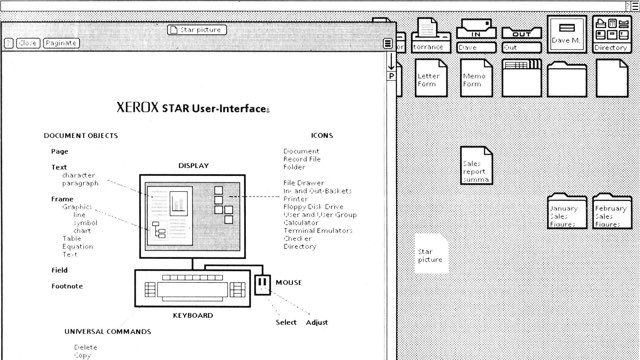
Okay.
I'm not seriously saying that our products are coming to life with Japanese artifact spirits. I don't really believe that aliens from Sirius B visited the Earth in 3,000 BC. I haven't seen the machine elves. Or at least, not on a super regular basis.
But I do think that the metaphors that we use to talk about technology are important, because they shape how we think and develop the technology. And the metaphors quickly become invisible, which means our thinking travels along particular grooves without us noticing.
Like Kubrick says, the "rigid surface cultural blocks that shackle our consciousness" -- what are they? What do they do to us?
This is the Xerox Star from 1981 -- over 30 years ago. How many people here were born in 1981 or after? [hands up]
All of you... you were born into the graphical user interface and the desktop metaphor. The Xerox Star was the first commercial computer to model the screen as a desktop. Real world documents were documents on screen that you could move about. Your hand became a pointer. Folders were folders. In-trays and out-trays. Direct manipulation of documents, just like the real world. Stacks. Hierarchies. Documents that can be finished.
Remember Ted Nelson... he called it the tyranny of paper. The reason it was Xerox who came up with this - says Nelson - is that Xerox was a business based around shifting around pieces of paper. Of course they would replicate that world with so little imagination, not taking advantage of what computers can really do.
It's great, it's familiar, it's good for first-time users. But a generation has passed. So it's not only the tyranny of paper, it's the tyranny of ease-of-use.
Source: The Desktop of XEROX's Star Information System (1981)
Matt Webb, Web Directions South 2014 (Sydney, Australia), October 2014